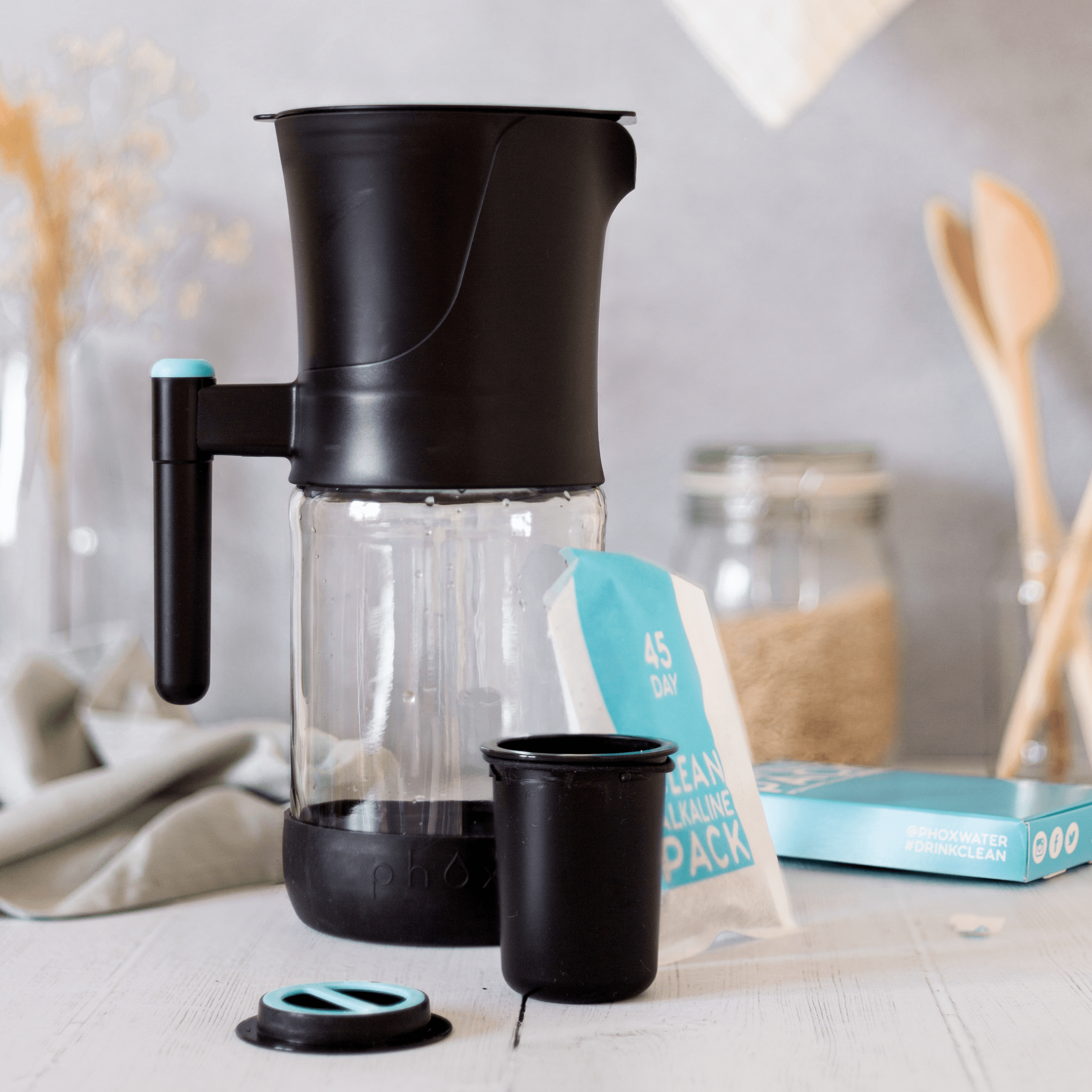5 Differences Between Alkaline Water & Reverse Osmosis
There is often confusion around the differences between alkaline water and reverse osmosis. This may be because people often associate alkaline water with ioniser machines, which is not always the case. Here, we're talking about countertop alkaline water filters, which don't require any huge costs or electricity usage.
What is Reverse Osmosis (RO)?
Reverse Osmosis uses a semi-permeable membrane system to remove ions, particles and molecules from water – this type of water filtration technology filters to a micron size of 0.0001.
Hydraulic pressure pushes the water through the system and separates the molecules, meaning that electricity is usually required to power this form of filtration.
5 Differences Between Alkaline Water & Reverse Osmosis
1. Alkaline Water filtration does not require electricity
As we previously alluded, reverse osmosis requires electricity to power the hydraulic pressure needed to treat the water and remove particles at such a small micron size. Along with the comparatively expensive cost of a reverse osmosis system, this makes alkaline water a much more viable alternative economically.
Typically, a countertop filter will be much easier to set up than a reverse osmosis system.
Learn more about how to make sustainable alkaline water.
2. Reverse Osmosis removes minerals
Although RO removes to a tiny micron size of 0.0001, this does not mean it necessarily creates the healthiest water. The process of RO reduces the total dissolved solids count to 0, which also strips mineral content out of the water, along with all the other contaminants. Demineralised water is not recommended for consistent human consumption because it can lead to dilution and deficiencies, if your mineral intake from your diet is insufficient. To circumvent this, the system would have to remineralise the water, which adds another step to the process.

On the other hand, an alkaline water filter can enhance the mineral content of drinking water and add electrolytes to allow for better hydration capacity. This aids mineral intake from your diet and can act as a much-needed top-up if you are not getting enough minerals from food. Your body can absorb minerals quicker from water than it can from food consumption, which makes alkaline water a great way of maintaining mineral and electrolyte balance.
3. Reverse Osmosis wastes a lot of water
The more water a reverse osmosis system pushes through its system, the more back pressure is created, which leads to more water being wasted. Due to the pressure that RO needs to apply to remove all dissolved solids, vast amounts of wastewater are created, carrying all the removed particles.
Retention rates vary between different makes and models, but they can be as low as 20%. This means that if you filter 20 litres of reverse osmosis water, around 80 litres will be flushed down the drain! While some new technologies claim to have created zero-waste systems, these tend to be very expensive.
One of the biggest challenges of our time is avoiding water crises like 'Day Zero' in Chennai, India, in 2019 – when the entire city ran out of water. This is a huge problem facing the planet, and using systems like Reverse Osmosis is far too inefficient.
A countertop filter can produce alkaline water, adding minerals and producing little wastewater.
4. An Alkaline Water Filter isn't huge
As you can imagine, reverse osmosis systems can be substantial units that take up much space in your kitchen. An alkaline water filter can be small enough to fit in your fridge because it comes as a small jug. Reverse osmosis systems can also be considerably expensive as well, meaning that an alkaline water filter is a much more economical alternative both in terms of aesthetics and economics.

5. Reverse Osmosis makes water acidic
Alkaline water enhances the pH level of your drinking water, in contrast to RO water, which makes it more acidic. As we've touched on, RO removes all the minerals, but this also adversely affects the pH level.
In order to improve the pH and give RO water healthy mineral content, it has to be put through an ioniser machine. This means extra time and a whole lot of extra money.
An alkaline water filter combines these processes in a way that is more accessible, affordable, and sustainable – a win-win situation!
Ready to Upgrade Your Hydration and Save the Planet?
Switch to the Phox V2 - 2.2L Glass Water Filter and start enjoying alkaline water that's better for you and the environment! With its refillable cartridge system, you can reduce plastic waste while filtering out harmful impurities like lead, chlorine, and copper. Plus, our granule refill packs fit conveniently through your letterbox – no hassle, no waste! Why wait?
Order today to enjoy FREE UK shipping.
Click now to join the sustainable hydration revolution and make every sip count! Shop Phox V2 Now.



